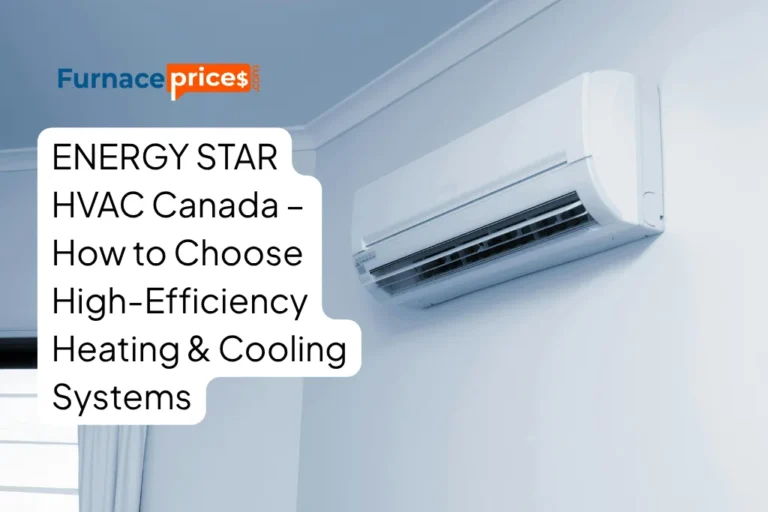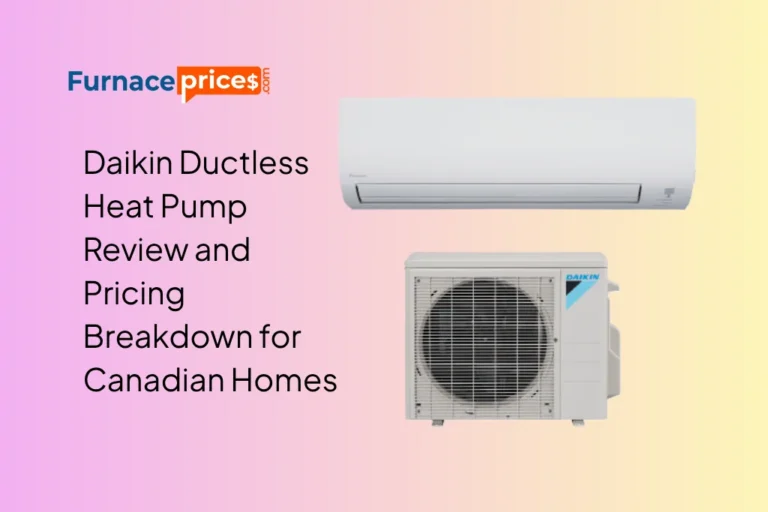Humidity Control in Your Home: How Air Conditioners Help Canadians Stay Comfortable

Introduction
Wondering how humidity impacts your comfort and your air conditioner’s performance during Canada’s warm summer months? This guide answers some of the most common questions Canadian homeowners have about humidity, air temperature, and how to maintain the right indoor balance. By understanding and improving humidity control in your home, you can reduce energy bills, enhance cooling performance, and create a healthier and more comfortable living space for your family.
How long does it take to remove humidity from the home?
Quick answer: For comfortable indoor air, humidity should be kept below 60%.
The time it takes your air conditioner to bring humidity levels down depends on several key factors, including:
- The size and layout of your home
- The capacity, efficiency, and condition of your A/C unit
- How well your home is insulated and sealed against outdoor air leaks
Typically, most homeowners will notice a difference in temperature and humidity within 30 minutes to an hour after their air conditioner starts running. However, if your system is undersized or struggling to keep up, it may take longer to achieve the desired results.
What is humidity and how does it relate to air temperature?
Humidity Control in Your Home is essential for maintaining comfort and air quality. Humidity refers to the amount of water vapour present in the air. When humidity is high, air holds more moisture, making it feel warmer than it actually is. This is why 26°C can feel like 30°C or higher when the humidity spikes.
By removing excess moisture, your air conditioner helps reduce that heavy, sticky feeling and allows your home to feel cooler and more comfortable.
Moisture can enter your home through various ways, including:
- Open windows and doors
- Cracks or gaps in walls and foundations
- Ventilation ducts and air leaks
When outdoor humidity is high, your air conditioner must work harder and longer to cool your home. This can increase wear and tear, shorten the unit’s lifespan, and raise your hydro bills.
If your A/C is outdated, improperly sized, or poorly maintained, it may struggle to manage both cooling and dehumidifying effectively. Sealing air leaks and upgrading insulation can help your system perform more efficiently.
How do you know if there’s too much moisture in the air?
You can usually feel when indoor humidity is too high. Here are the most common signs:
- Air feels thick, damp, or clammy
- Musty odours or damp smells in rooms or closets
- Condensation forming on windows and cold surfaces
- Mould growth in corners, bathrooms, or basements
Too much moisture over time can cause:
- Mould and mildew growth
- Respiratory issues or allergic reactions
- Damage to furniture, drywall, and paint
- An increase in insects and pests that thrive in damp conditions
Controlling humidity helps protect both your health and your home’s structure.
Humidity Control in Your Home: How to Reduce the Workload on Your Air Conditioner
There are several practical ways to reduce your air conditioner’s workload while keeping humidity under control:
- Set the thermostat fan to “Auto”:
This ensures the fan only runs while cooling is active. Leaving it on “On” will circulate moist air even when the compressor isn’t running. - Use exhaust fans:
Always turn on exhaust fans while cooking, showering, or doing laundry to remove excess moisture. - Limit indoor moisture sources:
Avoid drying clothes indoors unless absolutely necessary. If you can, hang laundry outside on warm, breezy days. - Check your air filters regularly:
A clogged filter reduces airflow, forcing your A/C to work harder and less efficiently.
Following these steps supports better humidity control in your home, improves comfort, extends the life of your air conditioner, and keeps your electricity bills manageable. If humidity remains high even with these adjustments, you may need to assess whether your unit is properly sized or if your home requires better ventilation.
What is a dehumidifier?
A dehumidifier is designed to remove excess moisture from indoor air. These devices can work independently or as part of your home’s HVAC system.
Here’s how a dehumidifier operates:
- It draws in humid air
- The air is cooled, causing moisture to condense
- Collected water is drained or stored in a tank
- The dry air is then released back into the room
Whole-home dehumidifiers connect to your furnace or ductwork, treating the air before it circulates through your home. Portable units, on the other hand, are ideal for specific areas like basements, laundry rooms, or crawl spaces where humidity tends to accumulate.
Proper humidity control not only increases comfort but also prevents moisture-related damage to floors, furniture, and walls—especially important in regions like Ontario where summer humidity can be intense.
What if it’s not extremely hot but still feels humid indoors?
If your home feels sticky or damp even when outdoor temperatures are mild, your air conditioner may not be functioning properly. Some common issues include:
- Low refrigerant levels (often caused by small leaks)
- Dirty or clogged air filters restricting airflow
- Incorrectly sized air conditioner for your home
- Leaky or poorly sealed ductwork
- Return vents blocked by curtains or furniture
You can start by replacing or cleaning your air filter. If that doesn’t solve the problem, it’s best to call a certified HVAC technician to inspect your system. They can check refrigerant pressure, inspect for leaks, and confirm whether the A/C is appropriately sized for your living space.
Final Thoughts
Keeping humidity levels in check isn’t just about comfort—it’s about maintaining air quality, protecting your home, and helping your air conditioner run efficiently. A balanced indoor environment can prevent costly repairs, reduce allergens, and lower your hydro bills.
With a combination of regular maintenance, proper ventilation, and the right equipment, you can enjoy a cool, comfortable, and healthy home all summer long—no matter how humid it gets outside.
For more information on energy efficiency standards and incentives in Canada, visit Natural Resources Canada.
📞 Have questions? Contact us or email us at contact@furnaceprices.com.
✅ Start comparing today and make the right choice with confidence!







